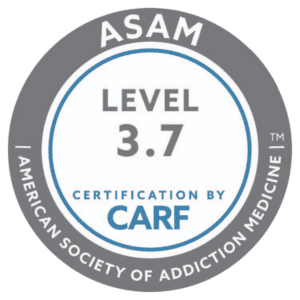What is Fentanyl?
Fentanyl is a synthetic opioid that belongs to a class of drugs known as opioid analgesics. It was originally developed to treat severe pain, particularly in cases of breakthrough cancer pain and chronic pain. Unlike naturally occurring opioids such as morphine or heroin, fentanyl is entirely synthetic, meaning it’s created in a laboratory.
Fentanyl’s exceptional potency stems from its interaction with the body’s opioid receptors. Opioid receptors are part of the body’s natural pain management system, and they play a role in regulating pain perception. Fentanyl binds to these receptors with remarkable affinity and efficacy.
What are the Risks?
A slight miscalculation or misuse can lead to overdose, respiratory depression, and potentially fatal consequences. This is why fentanyl is considered extremely dangerous, especially when it’s used outside of a controlled medical setting or prescribed without careful consideration of a patient’s needs
The Connection Between Illicit Drugs and Overdose Deaths

The illegal production and sale of fentanyl have become a major concern in the realm of drug abuse and addiction. Understanding the dynamics of this illicit market is crucial to comprehend the scale of the issue and its consequences.
Due to its high potency, fentanyl has gained notoriety as a street drug, often mixed with other substances. Illicitly manufactured fentanyl and its analogs are sold by drug dealers, contributing to overdose deaths in cases where individuals unknowingly consume this potent drug.
Illicit producers frequently create these analogs of fentanyl, which are structurally similar compounds. These analogs may be even more potent than the original fentanyl, increasing the risk of overdose.
Efforts to combat the illegal production and prosecute those who illegally sell fentanyl include stricter regulations on precursor chemicals, international cooperation to target illicit manufacturers, and initiatives to increase punishments as well as awareness among both law enforcement and the public.
Why is Fentanyl Prescribed for Severe Pain?

Fentanyl is prescribed for severe pain because of its exceptional potency and effectiveness in providing relief when other medications may not be sufficient. This synthetic opioid analgesic has specific qualities that make it a valuable tool in pain management. Let’s explore why fentanyl is prescribed for severe pain:
1. Potency: Fentanyl is one of the most potent opioids available for pain management. Its high affinity for opioid receptors in the body means that it can effectively alleviate even the most intense pain.
2. Rapid Onset: When administered correctly, fentanyl provides rapid pain relief. This rapid onset is particularly crucial in situations where immediate relief is necessary, such as during surgery or in cases of breakthrough cancer pain.
3. Prolonged Duration: Fentanyl works for prolonged pain relief, especially when used in the form of fentanyl patches. A fentanyl patch slowly releases the medication over an extended period, ensuring consistent pain control.
4. Individualized Treatment: Physicians prescribe fentanyl for severe pain when other medicines, including less potent opioids and non-opioid alternatives, have not adequately managed the pain. Each patient’s pain experience is unique, and fentanyl allows healthcare providers to tailor treatment to the individual’s needs.
5. Medical Procedures: Fentanyl is also prescribed for pain management during medical procedures, such as surgeries or diagnostic tests. Its rapid onset and potency make it suitable for providing anesthesia or managing post-operative pain.
6. End-of-Life Care: In palliative care settings, fentanyl is often prescribed to individuals with terminal illnesses. It can provide comfort and pain relief to patients who are in the final
Despite its effectiveness in pain management, it’s essential to recognize that fentanyl is not without risks. Due to its potency, there is a significant potential for abuse and addiction. Healthcare providers carefully weigh the benefits of pain relief against the risks of opioid misuse when prescribing fentanyl. Patients who are prescribed fentanyl should use it strictly as directed by their healthcare professionals and be monitored closely to ensure safe and effective pain management to avoid prolonged use.
Fentanyl Side Effects: Mental & Physical Effects of Fentanyl Use
Due to fentanyl being a powerful synthetic opioid, prolonged use and misuse of fentanyl can rapidly lead to fentanyl use disorder. The following symptoms, both physical and psychological are often associated with fentanyl use disorder as well as other forms of substance use disorder when abusing other drugs.

Physical Effects:
Respiratory Depression: Fentanyl use can lead to a dangerous slowing of breathing, known as respiratory depression. This is a critical concern as it can result in life-threatening breathing problems.
Misuse of Nasal Sprays and Patches: While fentanyl may provide pain relief, its rapid onset with nasal sprays and sustained release with patches can also increase the risk of overdose if not used as prescribed.
Withdrawal Symptoms: Discontinuing fentanyl use can lead to withdrawal, including restlessness, muscle and bone pain, diarrhea, vomiting, and more, making quitting the drug challenging without medical assistance.

Mental Effects:
Euphoria and Dependence: Fentanyl, like other opioids, produces feelings of intense euphoria when abused. This euphoric state is often what leads individuals to misuse the drug repeatedly, ultimately leading to dependence. The brain becomes accustomed to the pleasurable sensations caused by fentanyl, and individuals may feel compelled to keep using it to avoid withdrawal symptoms.
Psychological Dependence: Fentanyl misuse can result in profound psychological dependence. Users may find that they constantly think about obtaining and using the drug, to the detriment of other aspects of their life. This mental preoccupation can lead to neglect of responsibilities, strained relationships, and a reduced quality of life.
Mood Swings: Fentanyl abuse can lead to significant mood swings. Users may experience periods of euphoria followed by crashes, characterized by irritability, anxiety, and depression. These mood swings can disrupt personal and professional relationships and contribute to a sense of emotional instability.
Mental Health Disorders: Prolonged fentanyl abuse is associated with an increased risk of developing mental health disorders. Depression and anxiety are common, but more severe conditions, such as psychosis, can also occur. These disorders can complicate addiction treatment and recovery efforts.
Impaired Cognitive Function: Fentanyl’s sedative effects can impair cognitive function, including memory, attention, and decision-making. This can hinder an individual’s ability to perform tasks at work or school, potentially leading to academic or professional setbacks.
Diminished Emotional Responsiveness: Chronic fentanyl abuse can dull emotional responsiveness. Users may find it challenging to experience pleasure from everyday activities, leading to a sense of emotional numbness and detachment.
Signs of an Opioid Overdose
Recognizing the signs of an opioid overdose, including a fentanyl overdose, is crucial for anyone who may encounter this situation. Being prepared to respond promptly can save lives. Here are some specific signs and symptoms to watch for:
Extreme Drowsiness or Loss of Consciousness: If someone is unresponsive or slips into a deep, unarousable sleep, it could be a sign of overdose, as opioids like fentanyl can cause severe drowsiness.
Slow or Shallow Breathing: Opioid overdose, including fentanyl overdose, often leads to respiratory depression, where breathing becomes slow and shallow. In severe cases, it can lead to breathing cessation.
Blue or Gray Lips or Fingernails: A person experiencing an opioid overdose may exhibit cyanosis, a bluish or grayish tint to their lips, fingertips, or skin, indicating a lack of oxygen.
Gurgling Sounds: Due to respiratory distress, individuals may make unusual, gurgling sounds while breathing or become completely silent.
Pinpoint Pupils: Constricted or pinpoint pupils, even in low light conditions, are classic overdose symptoms.
Limpness or Weakness: Muscle weakness or limpness can occur during an overdose, making it challenging for the individual to move or respond.
How to be Prepared in Case of a Fentanyl Overdose
Call 911: Contact emergency services immediately for professional medical assistance.
Administer Naloxone (Narcan): If you have access to naloxone, an opioid antagonist, administer it as soon as possible. Naloxone can temporarily reverse the effects of the overdose, potentially saving the person’s life.
Perform Rescue Breathing: If the person has stopped breathing or has very shallow breathing, perform rescue breathing until medical help arrives.
Stay with the Person: Continue to monitor their condition and provide any necessary assistance while waiting for medical professionals.

Treatment Options for Fentanyl Addiction

Medical Detoxification: The first step in treating fentanyl use disorder is often medical detox. This supervised process helps individuals safely manage withdrawal symptoms and ensure a drug-free state. Medications may be administered to alleviate discomfort and cravings.
Medication-Assisted Treatment (MAT): MAT involves the use of medications like buprenorphine or methadone to reduce cravings and withdrawal symptoms. This approach can help individuals stabilize their lives and focus on recovery.
Behavioral Therapies: Therapy is used to address the psychological aspects of addiction and help individuals develop coping skills to resist drug use. Common types include cognitive-behavioral therapy (CBT), contingency management, and motivational enhancement therapy.
Treating Opioid Use Disorders at Malibu Treatment Center
At Malibu Detox and Residential Treatment Center, we understand the gravity of fentanyl addiction and the challenges it presents. Our comprehensive treatment approach focuses on addressing the physical and psychological aspects of fentanyl misuse.
Our dedicated team is equipped to manage withdrawal symptoms, educate clients about the side effects of fentanyl, and help them develop coping strategies for a drug-free life. We are committed to providing the highest level of care to individuals seeking addiction treatment, ensuring their safety and well-being throughout their recovery process.





